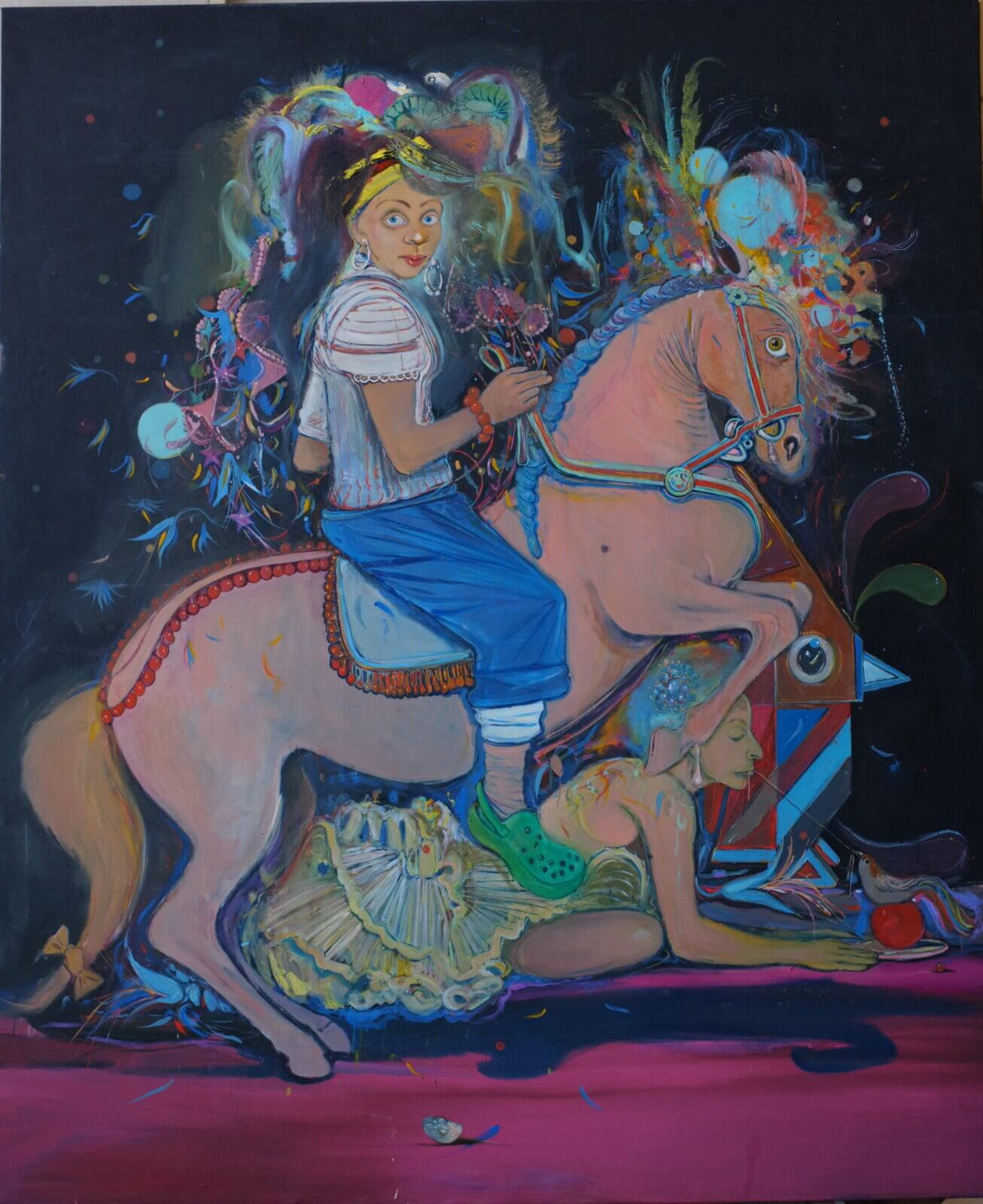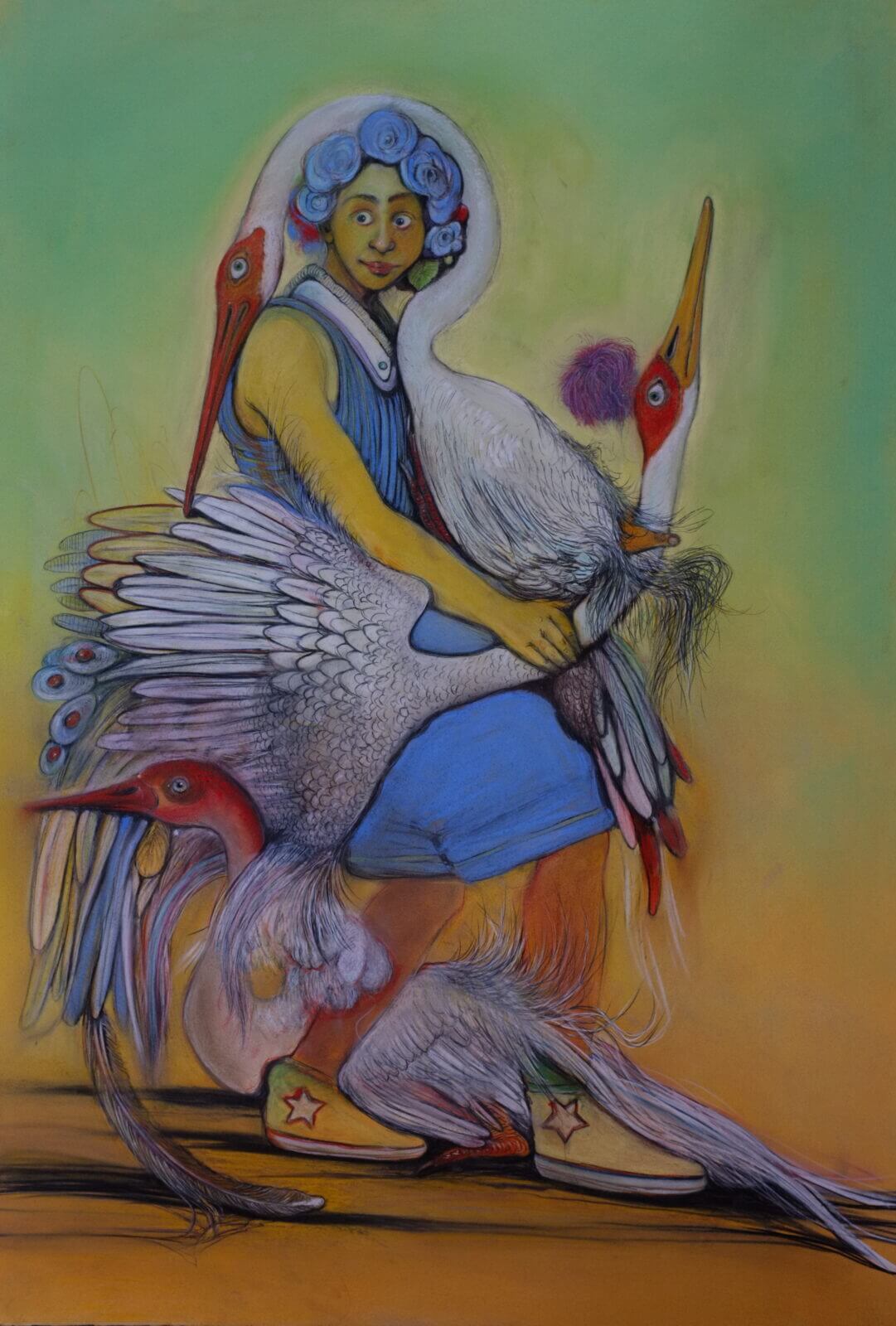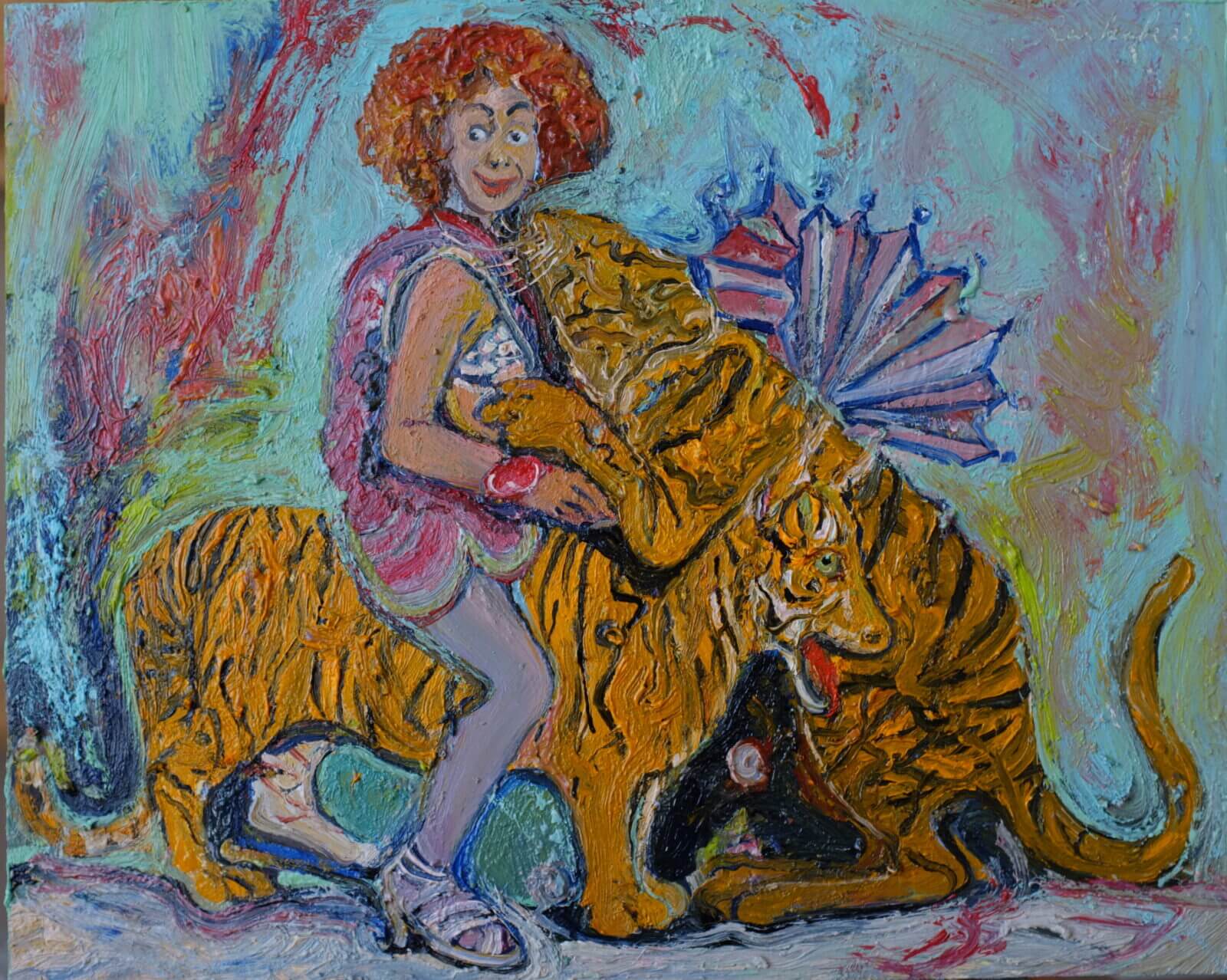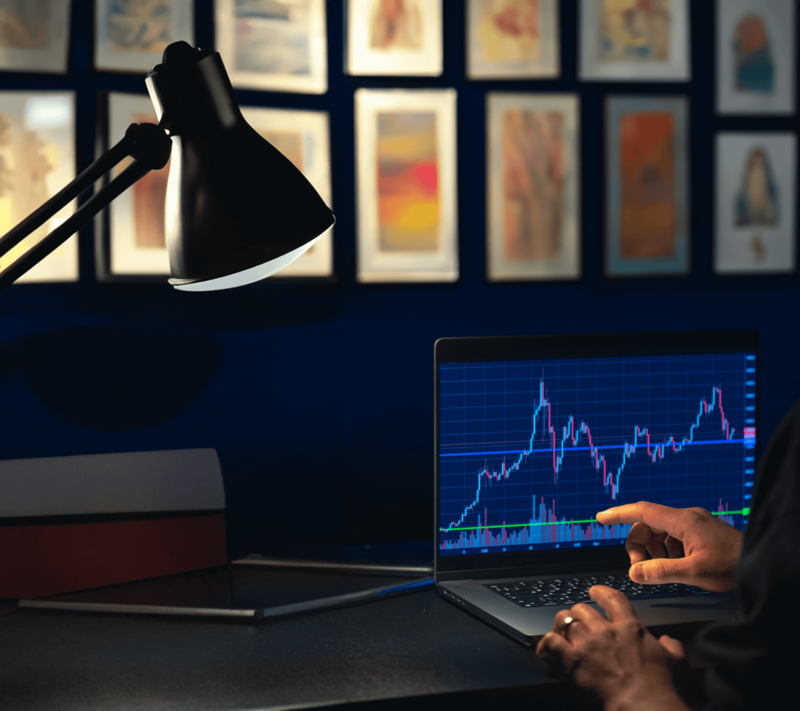Is art a good investment? If so, what are the main steps you need to follow to make the best out of art investing? Is investing in art for beginners a tough challenge? This guide will walk you through the fundamentals of art investing – from why it’s worth the investment to how you can begin to build a collection that has both personal and financial value.
Why invest in Art?
Investing in art for beginners is difficult. It’s not only a creative pursuit but also a data-driven investment decision. Unlike traditional assets like stocks or real estate, art is a physical, fractional investment that has shown historical resilience with its own unique market behavior.
Low Correlation to Traditional Markets
One of the most significant benefits of investing in art is its low correlation to traditional financial markets. Stocks and bonds are vulnerable to market cycles, downturns, and global crises. According to a 2022 CitiBank Report examining the historical correlation between Contemporary Art and developed equities from 1985-2021, it had a near-zero correlation (−0.04) with developed equities. Its highest correlation - 0.21 with real estate – was still fairly weak. This implies that art investments are not correlatable with stock market downturns, making art investment an attractive diversification for investors.
No Price Depreciation
Unlike many physical assets such as a car or electronics that depreciate over time, artwork can appreciate in value or at least hold its value. Based on historical trends, older artworks (especially those of more established artists) appreciate.
Aesthetic & Emotional Value
Unlike stocks or bonds, which exist only as digits on an electronic screen, art is an asset that can be appreciated visually and emotionally. Art enriches the culture, is personally rewarding, and can be profitable if showcased in the home, workplace, or gallery.
Passion & Prestige
For many investors, art is more than a financial asset – it’s a passion. Having a collection of valuable art is prestigious and serves as a conversation piece. Collectors often attend auctions, galleries, exhibitions, and so on, thereby deepening their understanding of and their connection to creative expression.
Supporting Artists & the Art Ecosystem
When they buy contemporary art, investors are directly supporting the careers of living artists. Unlike stocks, which enrich companies’ coffers, buying art supports creative communities and the larger art market.
A Reliable Long-Term Asset
The art market has been remarkably resilient, even through economic tumult. In the course of the pandemic in 2020, stock markets experienced extreme volatility, while the art market has stabilised. Many investors consider a piece of art as a long-term store of value to be passed down from generation to generation.
How to invest in art
Art as an investment is a very attractive option. However, before going deep into the market, you need to understand the main steps.
1. Set a Goal
Define your purpose before diving into art investment. Are you in it for the long play, an investment that will increase in value, a passion project, or some combination of the two? Your purpose will determine what kind of art you collect and how long you intend to hold it.
2. Do Your Research
The art market is a huge space, encompassing everything from old master paintings to digital NFTs. Explore different art movements, mediums, and artists. Read market reports, track auction results, and anticipate emerging trends.
3. Decide on a Budget
Art investment is not only for the ultra-wealthy. Choose a reasonable budget aligned with your financial plan. Whether you’re buying the best of the best blue-chip artworks or up-and-coming artists, discipline with budgeting is essential.
4. Find the Right Platform
There are various avenues available to purchasing art, from the classic auction houses (Christie’s, Sotheby’s) to cutting-edge online platforms like ArtyTraders, which is a great option for not only professionals but also first-time investors. It provides access to professional valuations, recommendations, and price predictions for potential buyers and sellers.
5. Verify Authenticity & Provenance
Buying fakes is one of the biggest risks in art investment. Always verify the provenance (history of ownership) of the artwork and get it properly authenticated, either by an expert, a certificate of authenticity, or through blockchain technology for digital assets.
6. Consider Storage & Insurance
Unlike stocks, art is a real asset, and it needs to be treated properly. Invest in secure storage and consider insuring valuable pieces for damage, theft, or loss.
7. Stay Updated & Diversify
Art trends shift, and an artist’s reputation can change. Keep up with market movements and diversify your portfolio with a range of styles and artists.
8. Know When to Sell
It is an investment in the long term, but there will be moments when the timing to sell would be perfect. An increase in an artist’s demand or changing trends are among the things that an online marketplace like ArtyTraders will help you take note of to sell your artwork for the best price possible.
Types of Art You Can Invest in
Investing in art for beginners can be challenging, but learning about the different types of art investment opportunities can help. Whether you’re a collector of dusty old masterpieces or an advocate of new digital mediums, it’s easier to make informed decisions when you’ve narrowed your focus. Here are the main types of art investments, along with their key characteristics and what you need to know:
Originals
Original art pieces are the most costly form of art investment. These are unique, one-of-a-kind pieces made by the artist and typically sell for high prices because of it. Originals are valuable, and if the artist gets some appreciation or has provided a reputation, the value grows even more. Due to their rarity, they typically have the highest resale potential to the average consumer and therefore are a best long-term investment. In fact, it’s not too dissimilar from a purchase, but you must do your due diligence to ensure authenticity and provenance before purchasing.
Prints
Prints are reproductions of original pieces, but they still have lots of value, too. Some have value based on the printing process used and whether they are part of a limited run and/or signed by the artist. Knowing about open or limited prints can help you in knowing if you are getting a good deal on prints. Prints are more affordable than originals, but they do not have as much investment potential. These are a great way for new collectors to have a piece of an artist but without the pressure of using disposable income to spend tons of money.
Giclées
Giclées are a notch above regular prints – rich, museum-quality reproductions made using sophisticated inkjet printing methods. These prints offer incredible detail and color accuracy, usually printed on archival paper or canvas for durability. Giclées are also priced higher than standard prints due to their high level of quality. They could have a certificate of authenticity that adds up to their value. But because these are still reproductions, they don’t hold the same investment value as original works of art.
Reproductions
Reproductions are copies of original works, typically produced in high volume and printed on commercial material and sold at very low prices. They are not part of a limited series and have little, if any, investment value, unlike prints and giclées. Reproductions may be used as a decorative piece but are not considered a legitimate asset of choice for art investors.
Investing in Art For Beginners: Investment Categories
What the art world has are several investment categories based on artist reputation, historical significance, and accessibility, just as financial markets have different asset classes. Investing in art for beginners can be hassle-free if you learn about some of the major categories:
Old Masters
Old Masters is the term used for artworks made by famous Renaissance to 18th-century artists like Leonardo da Vinci, Michelangelo, and Rembrandt. These works are among the rarest and most precious art pieces in the world, typically owned by elite collectors, institutions, or museums. Managing Old Masters is expensive, as are competing works of art – and the opportunities never knock for long as masterpieces are rare and always in high demand. They command historical and cultural significance as relatively stable investments, but their high price points are accessible only to the wealthiest of investors.
Blue Chip Art
The term blue chip, as applied to the art market, specifically refers to the works of artists who are already widely recognized as having a long track record of appreciation in value on an international scale. These figures include Pablo Picasso, Andy Warhol, and Jean-Michel Basquiat. Demand remains high for blue chip art, often fetching millions at prestigious auction houses owing to the cultural influence it exerts. Though blue chip art is more attainable than Old Masters, the leap is still significant. But emerging avenues, including fractional ownership, create opportunities for investors to purchase shares of expensive pieces of artwork, allowing more demographics to enter into this field.
Art Funds
For those who don’t have the knowledge - or the deep pockets – to invest in works by individual artists, art funds offer an alternative way to participate in the art market. These funds function like mutual funds that gather cash from investors to purchase and manage a diversified portfolio of art collections. Fund managers manage the acquisitions (and storage), as well as the sales , to create long-term returns. Art funds have given investors a way into the market without requiring a more in-depth coast of expertise, but charge fees and may have longer holding periods before returns can be realized.
Up-and-Coming Artists
As the artist’s hype grows, so does the value of the works from him that you own. These individuals, unlike blue chip artists, are still establishing themselves, and their works sell for substantially less. Investments in this realm are entirely predicated on thorough market research and intuition for whether an up-and-coming artist is worth a long haul, as not all new arrivals will remain past their first album. With the help of ArtyTraders, you can predict the next great stars in arts or photography. You could reap great rewards, but you will have to factor in the risks that come with speculative investing.
Alternative Art Investments
In recent years, investors have shown greater interest than ever in art investment of the alternative genre beyond traditional paintings and sculptures.
NFTs (Non-Fungible Tokens)
With the emergence of blockchain technology, a new frontier of investing in art opened up: NFTs. These digital assets are unique, verifiable, and not replicable, which is appealing to collectors. Digital artworks available for purchase and trading online can be found on NFT marketplaces like OpenSea, SuperRare, and Rarible. The value of NFTs can be highly unstable, and investors should be ready for significant price fluctuations.
Street Art & Contemporary Pieces
Street art has gone mainstream, thanks to artists such as Banksy. What was once considered as mere graffiti has now become a sought-after asset class that people value and love. Investing in contemporary pieces – even street art - is in part about understanding trends and which artists are being recognized. Some investors have realized significant returns on their early exposure to modern and contemporary art.
Conclusion
Investing in art for beginners requires a little more than just simply looking for financial returns. Art can be an investment like any other: you can buy original masterpieces, peruse emerging artists online, or even take a leap into the digital world with NFTs. But also, as with any investment, you need to research, be patient, and make a strategic decision. With some foresight and intelligence, your collection will help shape not only your financial future but your spiritual one, too. Art can be a great source of profit with the right techniques and lifelong passion.
FAQ
Do I need a lot of money to invest in art?
No, art investment is not only for the rich. Look to emerging artists, limited-edition prints, or fractional ownership platforms to get started. Research and patience are more important than the size of your budget. Take what you know and expand on it, invest for the long run, and look for cost-effective deals online.
Is art a safer investment than stocks or real estate?
Art is less volatile than stocks but also much less liquid. It doesn’t produce passive income, unlike real estate. But blue chip art tends to increase in value over time. The market is subjective, you must learn how to make data-driven decisions. It is a good diversification tool, with a little more risk due to valuation complexities and potential for market fluctuations.
Can I buy art online safely?
Yes, but proceed with caution. Use trusted platforms and verify the authenticity of products and seller reviews. Ask for provenance papers and certificates of authenticity. Risks are mitigated by secure payment methods, buyer protection policies, and expert opinions. For purchases of high value, the use of a third-party escrow service may be appropriate. Use thorough research to ensure safe art acquisition.








